Welcome to Banana Boost, your ultimate guide to unlocking the potential of nature’s energy-packed fruit – bananas. Discover how this humble fruit can elevate your health, enhance athletic performance, and add a delicious twist to your daily routine.
Banana Boost
Health Benefits:
- Rich in Potassium: Helps maintain fluid balance, muscle function, and nerve signals.
- High in Vitamin B6: Supports energy metabolism and red blood cell production.
- Good Source of Vitamin C: Boosts immune function and aids in collagen formation for tissue repair.
- Contains Dietary Fiber: Promotes digestive health and regulates blood sugar levels.
Athletic Performance:
- Quick Energy Boost: Bananas provide a natural source of carbohydrates for immediate energy.
- Muscle Cramp Prevention: Potassium in bananas helps prevent cramps during intense workouts.
- Post-Exercise Recovery: Replenishes glycogen stores and provides essential nutrients for muscle repair.
Ways to Enjoy Bananas:
1. Banana Smoothie:
– Blend bananas with yogurt, milk, and your favourite fruits for a creamy and nutritious smoothie.
2. Banana Pancakes:
– Create flourless banana pancakes by mashing ripe bananas with eggs and cooking them on a skillet. A healthy and delicious breakfast option.
3. Frozen Banana Pops:
– Dip banana slices in dark chocolate and freeze for a refreshing and guilt-free dessert or snack.
4. Banana Oatmeal:
– Add sliced bananas to your morning oatmeal for a natural sweetness and an extra boost of nutrients.
5. Banana and Nut Butter:
– Spread almond or peanut butter on banana slices for a satisfying and protein-packed snack.
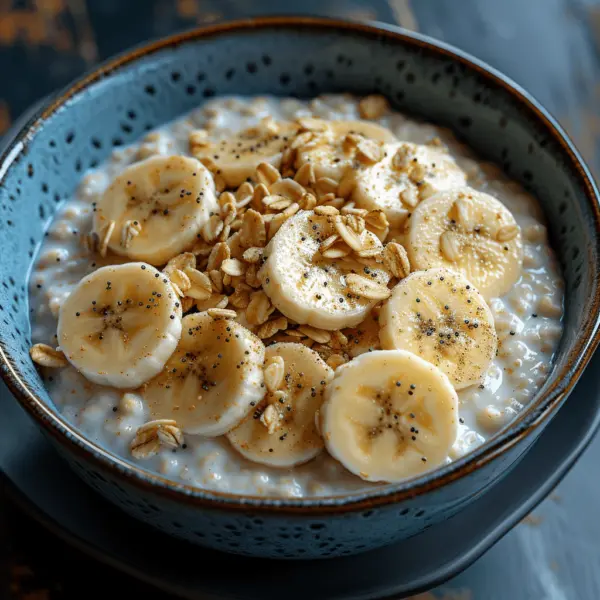
Nutritional information: Medium sized banana (118g)
| Nutrient | Amount per 100g |
|---|---|
| Calories | 89 kcal |
| Carbohydrates | 23 g |
| Fiber | 2.6 g |
| Protein | 1.1 g |
| Potassium | 358 mg |
| Vitamin C | 10.3 mg |
| Vitamin B6 | 0.4 mg |
FAQs:
Q: How do bananas support weight management?
A: Bananas are a filling snack due to their fiber content, helping control appetite and contributing to weight management. Their natural sugars provide sweetness without the need for less healthy snacks.
Q: Can I still enjoy Banana Boost if I have diabetes?
A: Yes, bananas can be part of a balanced diet for individuals with diabetes. The fiber helps regulate blood sugar levels. Monitor portion sizes and consult with a healthcare professional for personalized advice.
Q: Can bananas help with muscle cramps?
A: Yes, bananas are rich in potassium, which can help prevent muscle cramps by maintaining electrolyte balance.
Q: Can I freeze bananas for later use?
A: Absolutely! Peel and slice bananas before freezing for use in smoothies, as a frozen treat, or in baking. Frozen bananas add natural sweetness and moisture to recipes.
Everyday Wellness
Nutritional Benefits and Timing
What Is the Best Time to Eat Bananas?
Bananas are a versatile fruit that can be enjoyed at any time of the day. Here are some optimal times to include bananas in your diet:
- Pre-Workout Snack: Bananas provide a quick energy boost due to their natural sugars and carbohydrates, making them an excellent choice before a workout.
- Breakfast: Adding bananas to your breakfast can provide essential nutrients and energy to start your day. They pair well with cereals, smoothies, or oatmeal.
- Post-Workout Meal: After exercising, bananas help replenish energy levels and aid muscle recovery thanks to their potassium and carbohydrate content.
- Healthy Dessert Option: Bananas offer a natural sweetness, making them a great ingredient in healthy desserts without added sugars.
At What Stage Is It Best to Eat a Banana?
Bananas are best consumed when they are ripe, indicated by yellow skin with brown spots. Ripe bananas are sweeter, easier to digest, and contain higher levels of antioxidants. Overripe bananas with fully brown skins are ideal for baking or blending into smoothies, where their increased sweetness and softer texture are advantageous.
Can I Eat Bananas on an Empty Stomach?
Yes, bananas are gentle on the stomach and can be eaten on an empty stomach without causing discomfort for most people. They provide a quick source of energy and can help alleviate hunger between meals. Bananas also contain pectin, which can help with digestion and stabilize blood sugar levels.
Should I Eat a Banana Before Working Out?
Yes, eating a banana before working out is a great choice. Bananas are rich in natural sugars and carbohydrates, which provide a quick source of energy. They also contain potassium, which helps maintain muscle function and prevent cramps during exercise. Consuming a banana 30-60 minutes before your workout can enhance your performance by providing the necessary fuel for your muscles.
Additional Health Benefits
Do Bananas Help You Sleep?
Yes, bananas can promote better sleep due to their high levels of magnesium and potassium. These minerals help relax muscles and regulate sleep patterns, making bananas an excellent bedtime snack for a more restful night’s sleep. Additionally, bananas contain tryptophan, which is a precursor to serotonin and melatonin, both of which play crucial roles in sleep regulation.
Are Bananas Good for Anxiety?
Bananas can help reduce anxiety levels due to their content of tryptophan, which the body converts into serotonin, a neurotransmitter that helps regulate mood. Moreover, bananas are rich in vitamin B6, which is essential for producing serotonin. Incorporating bananas into your diet may promote a sense of well-being and relaxation.
Will a Banana Raise My Blood Sugar?
Yes, bananas can raise your blood sugar levels because they contain natural sugars and carbohydrates. However, the impact on blood sugar is moderate due to their fiber content, which helps slow down the absorption of sugar into the bloodstream. For most people, eating a banana can provide a balanced source of energy without causing a significant spike in blood sugar levels. If you have diabetes or are concerned about blood sugar management, it’s best to monitor your response to bananas and incorporate them into a balanced diet.
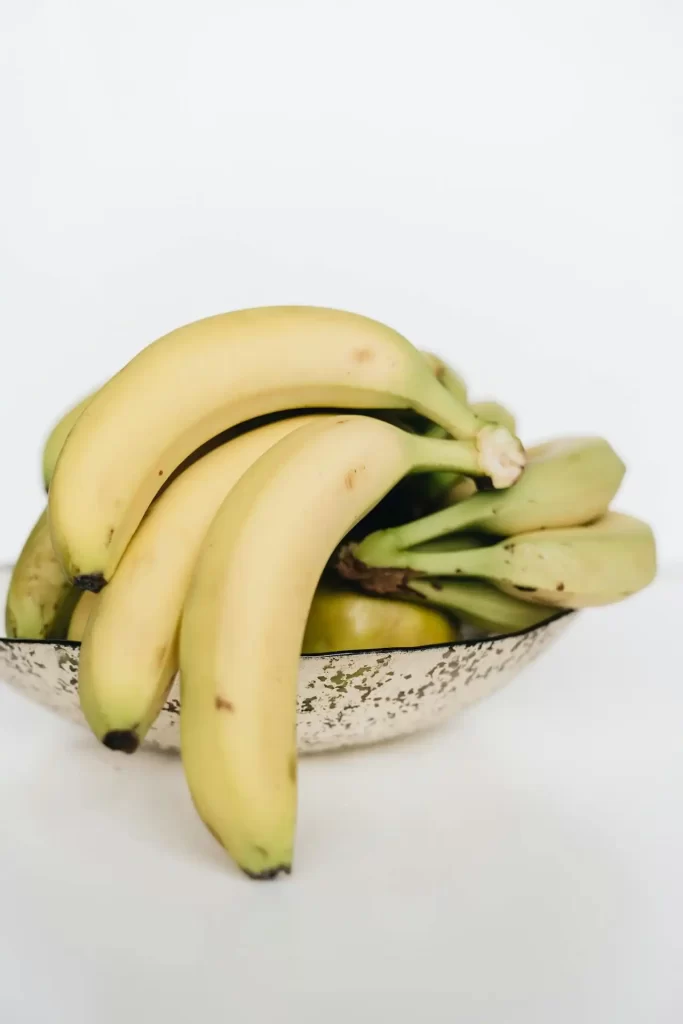
Consumption and Safety
Is it Safe to Eat Banana Skins?
While banana skins are technically edible, they are not commonly consumed due to their tough and fibrous texture. However, banana peels contain additional nutrients such as fiber, antioxidants, and vitamins. Some people blend banana peels into smoothies or use them in recipes to take advantage of these nutrients. If you choose to consume banana skins, ensure they are thoroughly washed to remove any pesticides or contaminants.
Can I Drink Water After Eating Bananas?
Yes, it is safe to drink water after eating bananas. Drinking water can aid digestion and prevent dehydration. It’s essential to maintain a balanced intake of fluids throughout the day for optimal hydration, and consuming water after eating bananas contributes to this balance.
Botanical Classification
Are Bananas Berries?
Botanically, bananas are classified as berries. This is because they develop from a single ovary and contain seeds. Despite this classification, bananas are commonly referred to as fruits due to their culinary use and characteristics.
Special Diets
Are Bananas Keto-Friendly?
Bananas are not considered keto-friendly due to their relatively high carbohydrate content. A medium banana contains about 24 grams of net carbs, which can quickly exceed the daily carb limit for those following a ketogenic diet. If you’re on a strict keto diet, it’s best to avoid bananas or consume them in very small portions while keeping track of your total carb intake. Instead, opt for lower-carb fruits like berries to stay within your carbohydrate limits.
Easy to make Banana Recipes
Banana Egg Oat Pancakes
Ingredients:
- 2 ripe bananas
- 2 large eggs
- 1 cup rolled oats
- 1/2 teaspoon baking powder
- 1/2 teaspoon vanilla extract (optional)
- Pinch of salt
- Cooking spray or a small amount of butter for the pan
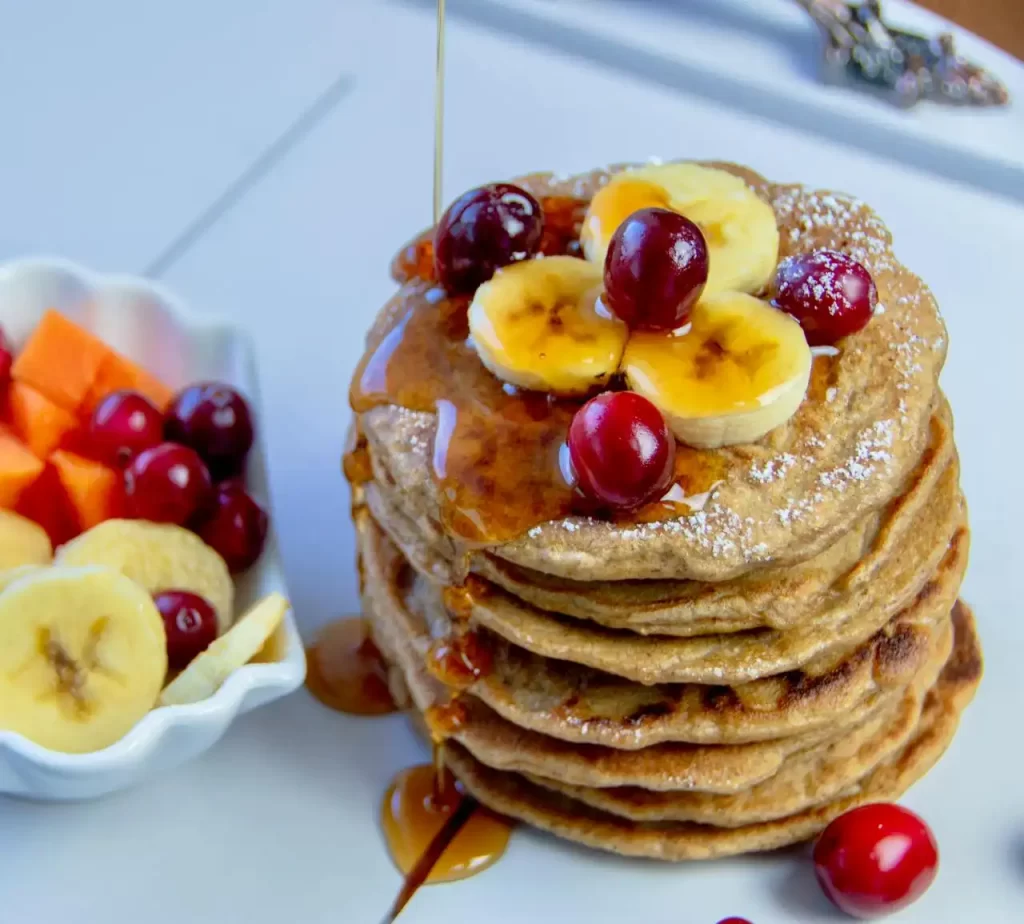
Instructions:
- Mash the bananas in a mixing bowl.
- Add the eggs and whisk together until combined.
- Stir in the oats, baking powder, vanilla extract, and salt.
- Let the mixture sit for a few minutes to thicken.
- Heat a non-stick skillet over medium heat and lightly grease it.
- Pour small amounts of the batter onto the skillet to form pancakes.
- Cook until bubbles form on the surface, then flip and cook until golden brown on the other side.
- Serve warm.
Serving Size:
Makes approximately 8 small pancakes.
Macros (per pancake):
- Calories: 60
- Protein: 3g
- Carbohydrates: 10g
- Fat: 1.5g
- Fiber: 1.5g
Eggless Banana Bread
Ingredients:
- 3 ripe bananas, mashed
- 1/2 cup vegetable oil or melted coconut oil
- 1 cup sugar (or 1/2 cup honey or maple syrup for a healthier option)
- 1/4 cup milk (dairy or non-dairy)
- 1 teaspoon vanilla extract
- 2 cups all-purpose flour
- 1 teaspoon baking soda
- 1/2 teaspoon salt
- 1/2 teaspoon cinnamon (optional)
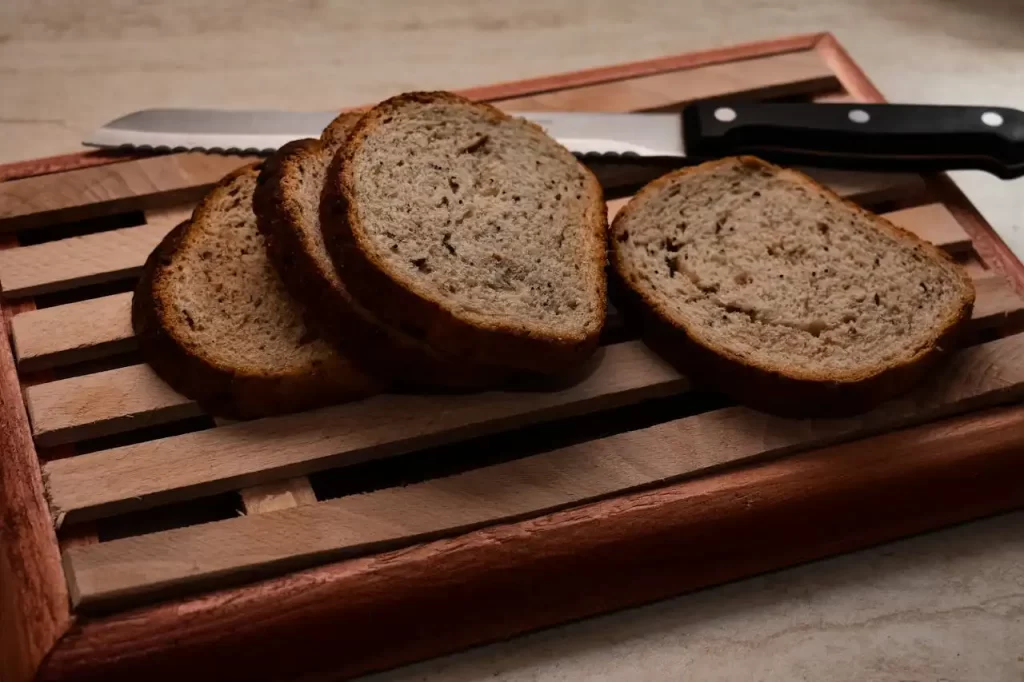
Instructions:
- Preheat the oven to 350°F (175°C). Grease a 9×5 inch loaf pan.
- In a large bowl, combine mashed bananas, oil, sugar (or honey/maple syrup), milk, and vanilla extract.
- In a separate bowl, whisk together the flour, baking soda, salt, and cinnamon.
- Gradually add the dry ingredients to the wet ingredients and mix until just combined.
- Pour the batter into the prepared loaf pan.
- Bake for 60-70 minutes, or until a toothpick inserted into the center comes out clean.
- Let cool in the pan for 10 minutes, then transfer to a wire rack to cool completely.
- Slice and serve.
Serving Size:
Makes 10 slices.
Macros (per slice):
- Calories: 200
- Protein: 2g
- Carbohydrates: 30g
- Fat: 8g
- Fiber: 1g
No Sugar Banana Bread
Ingredients:
- 3 ripe bananas, mashed
- 1/4 cup melted coconut oil
- 1/4 cup unsweetened applesauce
- 2 large eggs
- 1 teaspoon vanilla extract
- 2 cups whole wheat flour
- 1 teaspoon baking soda
- 1/2 teaspoon salt
- 1/2 teaspoon cinnamon (optional)
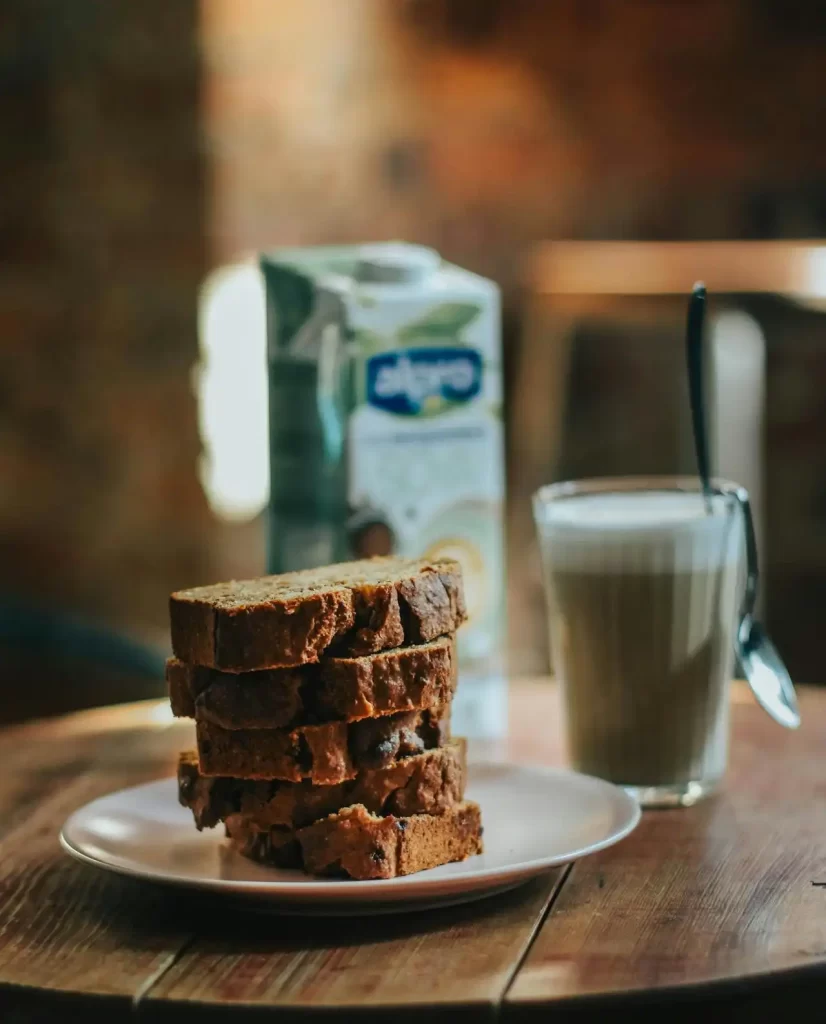
Instructions:
- Preheat the oven to 350°F (175°C). Grease a 9×5 inch loaf pan.
- In a large bowl, combine mashed bananas, coconut oil, applesauce, eggs, and vanilla extract.
- In a separate bowl, whisk together the flour, baking soda, salt, and cinnamon.
- Gradually add the dry ingredients to the wet ingredients and mix until just combined.
- Pour the batter into the prepared loaf pan.
- Bake for 60-70 minutes, or until a toothpick inserted into the center comes out clean.
- Let cool in the pan for 10 minutes, then transfer to a wire rack to cool completely.
- Slice and serve.
Serving Size:
Makes 10 slices.
Macros (per slice):
- Calories: 150
- Protein: 3g
- Carbohydrates: 22g
- Fat: 5g
- Fiber: 3g
No Sugar Banana Pancakes
Ingredients:
- 2 ripe bananas, mashed
- 2 large eggs
- 1 cup whole wheat flour
- 1 teaspoon baking powder
- 1/2 teaspoon vanilla extract (optional)
- Pinch of salt
- Cooking spray or a small amount of butter for the pan
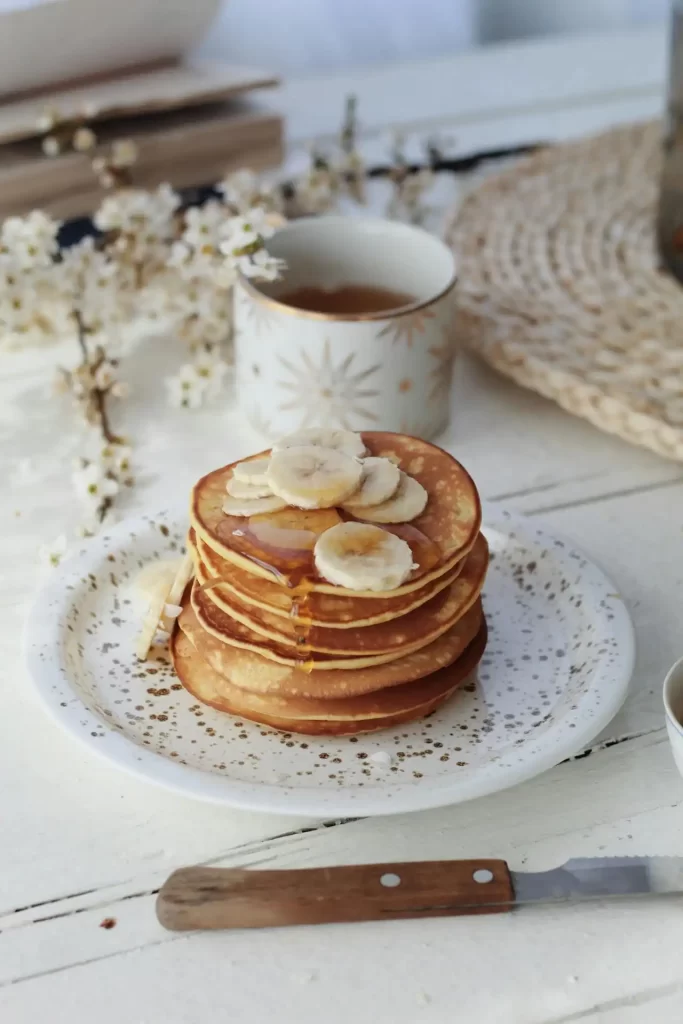
Instructions:
- Mash the bananas in a mixing bowl.
- Add the eggs and whisk together until combined.
- Stir in the flour, baking powder, vanilla extract, and salt until a batter forms.
- Heat a non-stick skillet over medium heat and lightly grease it.
- Pour small amounts of the batter onto the skillet to form pancakes.
- Cook until bubbles form on the surface, then flip and cook until golden brown on the other side.
- Serve warm.
Serving Size:
Makes approximately 8 small pancakes.
Macros (per pancake):
- Calories: 70
- Protein: 3g
- Carbohydrates: 12g
- Fat: 1g
- Fiber: 2g
Quick Banana Bread
Ingredients:
- 3 ripe bananas, mashed
- 1/2 cup melted butter
- 3/4 cup sugar (or 1/2 cup honey or maple syrup for a healthier option)
- 1 large egg, beaten
- 1 teaspoon vanilla extract
- 1 teaspoon baking soda
- Pinch of salt
- 1 1/2 cups all-purpose flour
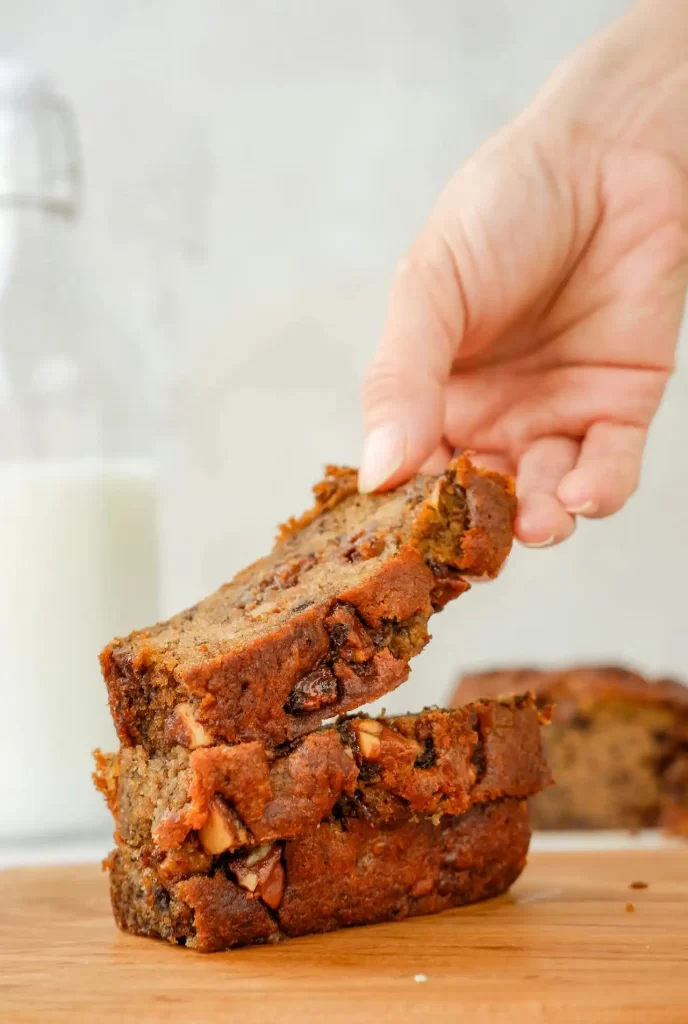
Instructions:
- Preheat the oven to 350°F (175°C). Grease a 9×5 inch loaf pan.
- In a large bowl, mix the melted butter and mashed bananas.
- Add the sugar (or honey/maple syrup), beaten egg, and vanilla extract, and mix well.
- Sprinkle the baking soda and salt over the mixture and mix in.
- Add the flour last and mix until just combined.
- Pour the batter into the prepared loaf pan.
- Bake for 60-65 minutes, or until a toothpick inserted into the center comes out clean.
- Let cool in the pan for 10 minutes, then transfer to a wire rack to cool completely.
- Slice and serve.
Serving Size:
Makes 10 slices.
Macros (per slice):
- Calories: 210
- Protein: 2g
- Carbohydrates: 31g
- Fat: 9g
- Fiber: 1g